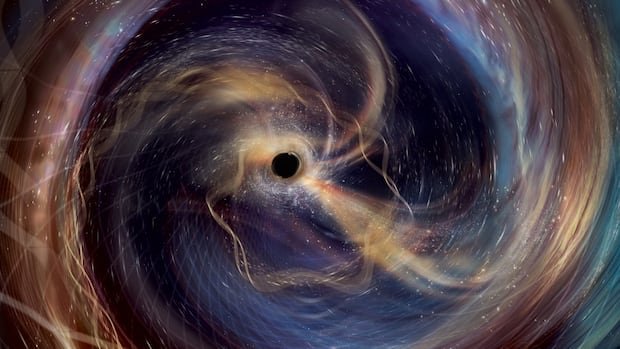Renowned physicist Stephen Hawking, along with Albert Einstein, have once again been proven correct. Scientists at the U.S. National Science Foundation’s Laser Interferometer Gravitational-wave Observatory (LIGO) have detected a gravitational wave, a distortion in space-time caused by powerful events like the collision of two black holes or neutron stars.
The gravitational wave observed resulted from the collision of two black holes located approximately 1.3 billion light years away from Earth. These black holes, with masses around 30 times that of the sun, merged to form a new black hole named GW250114.
The LIGO detectors in Hanford, Washington, and Livingston, Louisiana, have identified nearly 300 such cosmic events. However, this recent detection provided researchers with significant new insights into black hole mergers.
The collision of these black holes produced distinct tones known as “ringing,” confirming a theory proposed by mathematician Roy Kerr in 1963. This ringing indicated that a black hole can be characterized solely by its mass and spin, validating Kerr’s predictions.
The study’s co-authors, Jess McIver and Max Isi, elaborated on the discovery published in the journal Physical Review Letters. They explained that the observed tones matched, supporting the Kerr solution for describing black holes. Had the tones differed, additional properties would have been required to define a black hole.
The merger also validated Einstein’s general theory of relativity, which initially proposed the existence of black holes. Furthermore, it confirmed Hawking’s area theorem, demonstrating that the event horizon of a black hole, representing the region from which no light can escape, can only increase in size following a merger.
Despite the increase in the event horizon’s area, the mass of the resulting black hole decreased, aligning with theoretical expectations. The researchers emphasized that the growth in the event horizon area is inevitable during black hole mergers, with energy being emitted as gravitational waves.
This recent discovery, named GW250114, provided conclusive evidence of a black hole merger, surpassing previous detections in strength and clarity. The researchers expressed excitement about future advancements in detector technology and the potential for unexpected discoveries in the field of astrophysics.


